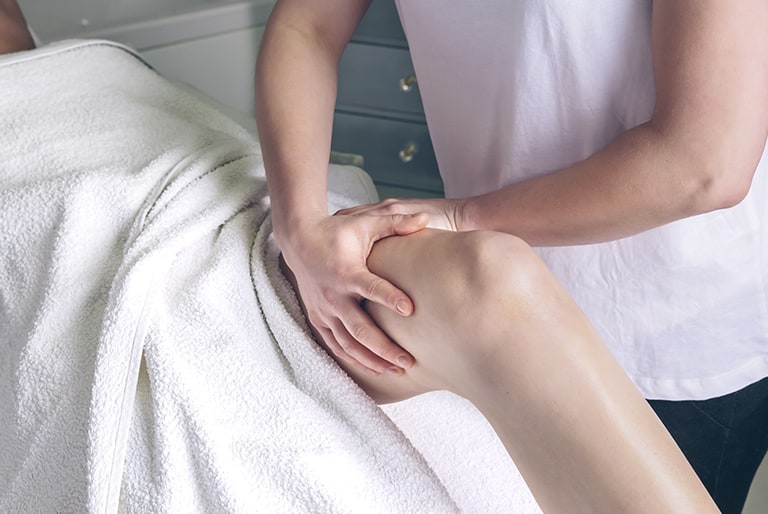Lasering veins: endovenous laser therapy
Anyone who wants to get rid of unsightly varicose veins can have them lasered. This method is a gentle alternative to vein stripping. Learn more about varicose vein treatment with lasers.

What is endovenous laser therapy?
What exactly happens during laser therapy?
The prerequisite for the operation is a thorough diagnosis by Doppler ultrasound. The vein specialist examines the shape and course of the diseased veins and marks the course of the varicose veins on the skin. Also during laser therapy itself, the phlebologist monitors the operation the whole time by ultrasound.
A very thin, flexible catheter is inserted into the venous system and pushed into the right position. Next, the subcutaneous fat tissue around the varicose veins is anaesthetised with a local anaesthetic. The so-called tumescent solution ensures that the surrounding tissue is protected from the heat and, in addition to that, also has an anti-inflammatory effect.
The treatment starts as soon as it takes effect. The doctor slowly withdraws the catheter while the laser heats up the inner walls of the vessels of the varicose veins and, in so doing, destroys them. In an ideal situation, the vein will be completely absorbed by your body within a few weeks. After the operation, the point of insertion is covered with a plaster and a compression stocking is applied.
What is important after laser treatment?
Patients can move about normally again immediately after the treatment. Short strolls are recommended, as these stimulate blood flow and reduce the risk of thrombosis. It is necessary to wear compression stockings afterwards. Several days after the treatment, your doctor will examine the result by ultrasound and will check if complications have arisen.
What are the benefits of the laser procedure?
The results of the treatment are as good as those from vein stripping. Laser therapy scores against stripping with some added benefits:
- No detrimental anaesthesia
- No scars
- Lower risk of infection
- Less pain
- Less bruising and nerve damage
- Patients do not have to be on sick leave
What are the risks and side effects of laser therapy?
The removal of varicose veins by laser is a gentle procedure which rarely leads to complications. The following side effects can occur in rare cases:
- Burns on the skin
- Pain or bruises at the point of entry or along the vein
- Sensory disruption of the skin, which disappears again quickly
- Superficial thrombosis of the lateral branch veins
- Very rarely deep vein thrombosis
- Very rarely there can be an allergic reaction to the local anaesthetic
After the treatment, the destroyed vein can feel rubbery under the skin. This feeling does disappear on its own after some time.
Who is laser therapy suitable for?
Almost all patients who suffer from venous insufficiency can have it treated with minimally invasive procedures such as laser therapy and radiofrequency therapy.
Can spider veins also be treated with lasers?
Spider veins can be removed with a special laser device. It entails aiming a monochromatic laser light at the fine, expanded veins. The blood in the spider vein heats up very intensely and the fine vessel is sealed. However, according to the guidelines from the European Society for Laser Dermatology (ESLD), sclerotherapy has proven itself as the more effective and gentler gold standard for removing spider veins.
Does the health insurance fund pay for laser therapy?
As a rule, private health insurance funds cover laser therapy. Many statutory health insurers have concluded quality agreements and also reimburse the treatment. It is best to ask your health insurance before the treatment if they will cover the costs.
How can I prevent new varicose veins?
Varicose veins cannot be totally prevented, but you can do a lot for the health of your venous system:
- Make sure you have a balanced diet with lots of fresh fruit, vegetables and whole foods. Where possible, avoid sugar, ready meals and alcohol.
- Going for a stroll, light endurance sport and special vein gymnastics help to support circulation in your veins. Best is to avoid prolonged sitting and standing.
- Watch your weight. Too many pounds encourage the development of varicose veins.
- Regular contrast showers keep your veins elastic for longer.
Medicines can help with your blood’s fluidity and in supporting vein walls, such as Veno SL® 300 with the active ingredient Troxerutin, which is extracted from an ingredient of the Japanese Pagoda Tree.



